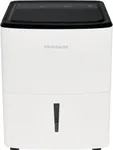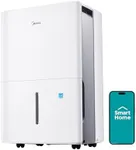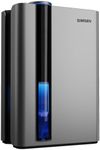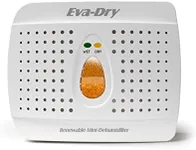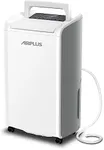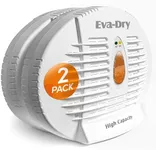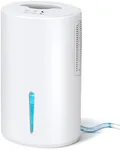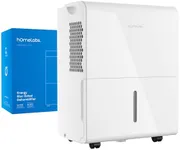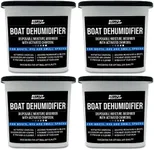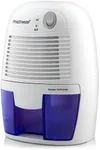Buying Guide for the Best Desiccant Dehumidifier
Choosing the right desiccant dehumidifier can significantly improve the air quality and comfort of your home or workspace. Desiccant dehumidifiers are particularly effective in colder environments and are known for their quiet operation and efficiency. To make an informed decision, it's important to understand the key specifications and how they relate to your specific needs.CapacityCapacity refers to the amount of moisture a dehumidifier can remove from the air in a day, usually measured in pints or liters. This is important because it determines how effective the dehumidifier will be in your space. For small rooms or areas with mild humidity, a lower capacity (10-20 pints/day) may suffice. For larger spaces or areas with high humidity, you might need a higher capacity (30-50 pints/day). Consider the size of the area and the level of humidity when choosing the capacity.
Coverage AreaCoverage area indicates the maximum space the dehumidifier can effectively manage, usually measured in square feet or square meters. This is crucial to ensure the dehumidifier can handle the size of the room or area you intend to use it in. For small rooms, a coverage area of up to 500 square feet may be adequate. For larger rooms or open spaces, look for models that cover 1000 square feet or more. Match the coverage area to the size of your space for optimal performance.
Energy EfficiencyEnergy efficiency measures how much energy the dehumidifier uses to remove moisture from the air. This is important for keeping your energy bills low and reducing environmental impact. Look for models with an Energy Star rating or other energy efficiency certifications. Higher efficiency models may cost more upfront but can save money in the long run. Consider how often you will use the dehumidifier and the potential energy savings when making your choice.
Noise LevelNoise level indicates how loud the dehumidifier is during operation, usually measured in decibels (dB). This is important if you plan to use the dehumidifier in a living space, bedroom, or office where noise could be disruptive. Lower noise levels (30-40 dB) are ideal for quiet environments, while higher levels (50-60 dB) may be acceptable for basements or garages. Consider where you will place the dehumidifier and your sensitivity to noise when selecting a model.
Operating Temperature RangeThe operating temperature range specifies the temperatures at which the dehumidifier can function effectively. This is important if you plan to use the dehumidifier in areas that experience extreme temperatures, such as basements or unheated spaces. Desiccant dehumidifiers typically perform well in lower temperatures (down to 33°F or 1°C). Ensure the model you choose can operate within the temperature range of your intended space to maintain efficiency.
Tank Capacity and Drainage OptionsTank capacity refers to the size of the water collection tank, and drainage options indicate how the collected water can be removed. This is important for convenience and maintenance. A larger tank means less frequent emptying, but it also makes the unit bulkier. Some models offer continuous drainage options, such as a hose connection, which can be more convenient for continuous use. Consider how often you can empty the tank and whether continuous drainage is a feature you need.
Additional FeaturesAdditional features can enhance the usability and convenience of the dehumidifier. These may include a built-in humidistat to maintain desired humidity levels, auto-restart after power outages, timer settings, and air purification functions. These features can add to the overall comfort and ease of use. Think about which additional features would be beneficial for your specific needs and preferences when choosing a model.
